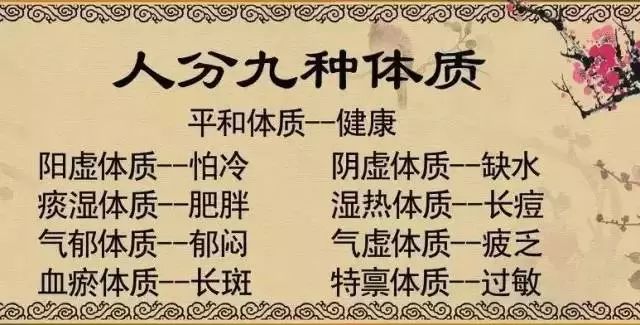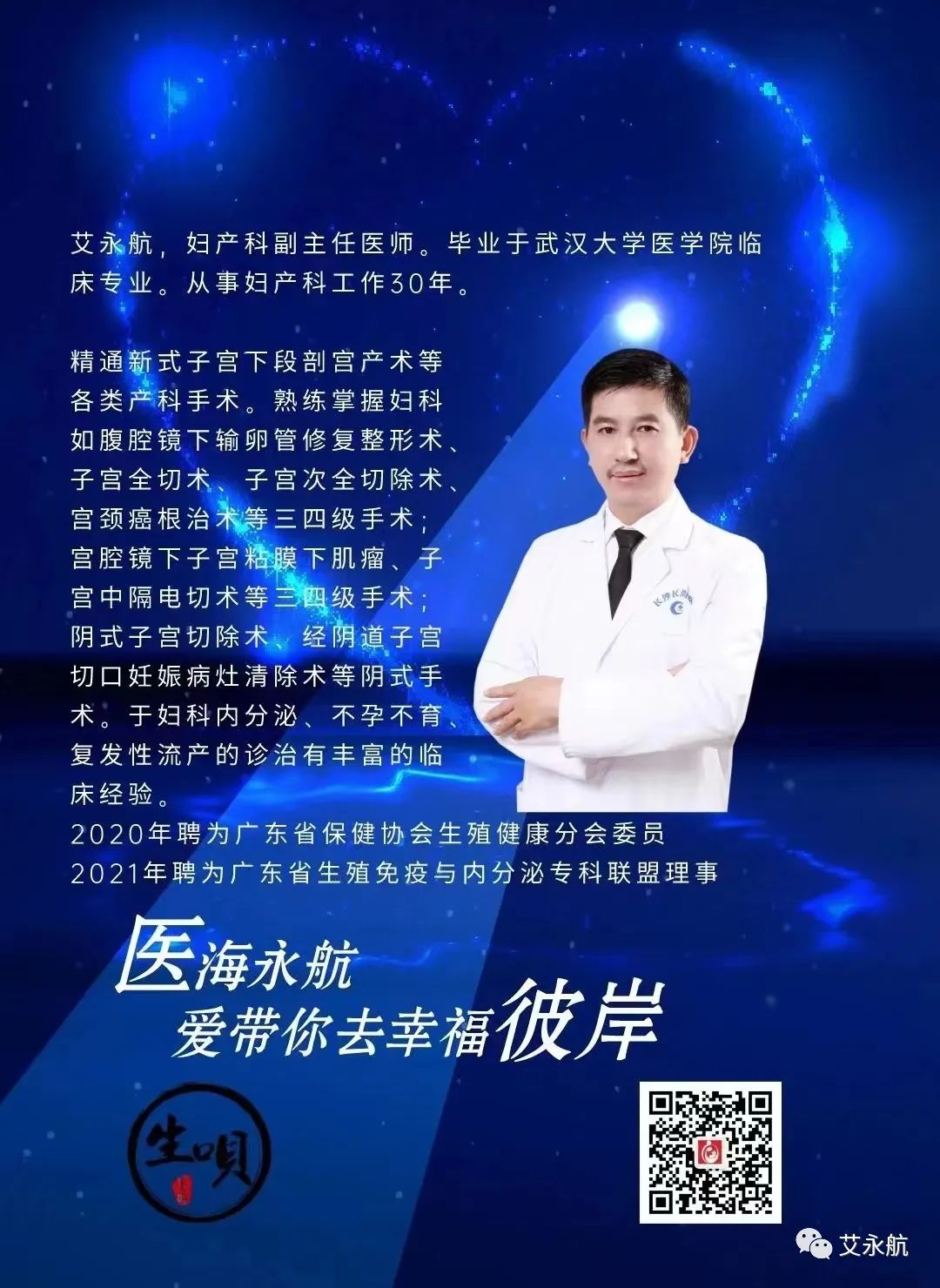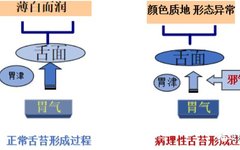Tongue diagnosis is a common method in Traditional Chinese Medicine (TCM) for diagnosing diseases. It involves observing the tongue’s quality, coating, shape, color, and moisture to determine the nature of the disease, assess the severity of the condition, and evaluate the deficiency or excess of the internal organs.The tip of the tongue reflects the conditions of the upper jiao (heart and lungs); the middle part of the tongue reflects the middle jiao (spleen and stomach); the root of the tongue reflects the lower jiao (kidneys); and the sides of the tongue reflect the liver and gallbladder. According to the stomach meridian division: the tip of the tongue corresponds to the upper jiao, the middle part corresponds to the middle jiao, and the root corresponds to the lower jiao.
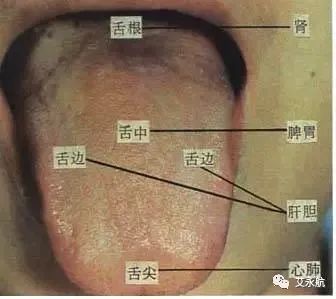
The tongue is the manifestation of the heart, the spleen is its exterior, and the coating is generated by the stomach qi. The internal organs are connected to the tongue through the meridians, making tongue diagnosis an important aspect of TCM. The hand shaoyin meridian connects to the root of the tongue, while the foot shaoyin, foot jueyin, and foot taiyin meridians also connect to the root of the tongue, dispersing beneath the tongue, thus reflecting the changes in the internal organs.
The tongue body, also known as the tongue quality, is composed of muscle and a rich supply of blood vessels and nerves. Its color, shape, and distribution of moisture can change easily during the course of a disease.The tongue body represents the material state of the body, containing essential substances such as qi, blood, and body fluids. Observing the tongue is essentially observing the state of these internal substances.
The tongue coating is a layer of coating on the surface of the tongue, composed of filiform papillae, shed cells, mucus, food residues, etc. It appears slightly white, and a normal tongue typically has a thin white coating. The normal tongue coating is generated by the stomach qi and stomach yin rising to the surface of the tongue, while pathological tongue coatings are formed when the stomach qi is accompanied by pathogenic factors. The tongue coating reflects the state of the qi mechanism of the stomach and intestines, as the essence and qi from the internal organs rise to the tongue, forming the tongue coating.
Position and posture for tongue observation: the patient should be seated or lying supine. The tongue should be naturally extended, relaxed, and flat, with the tip slightly downward, and the mouth should be opened wide to fully expose the tongue body.
The order of tongue observation: tip of the tongue–middle of the tongue–sides of the tongue–root of the tongue–tongue coating
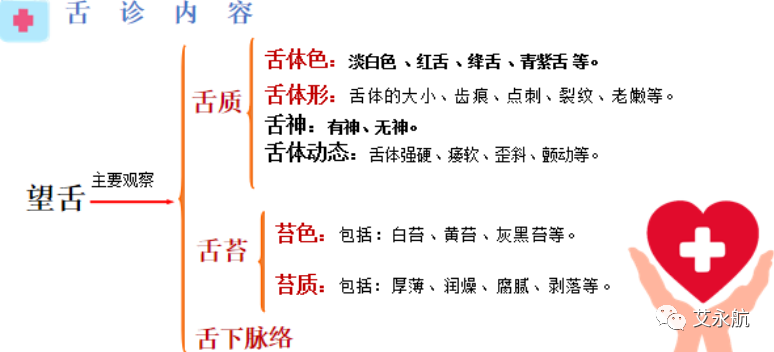
Normal tongue
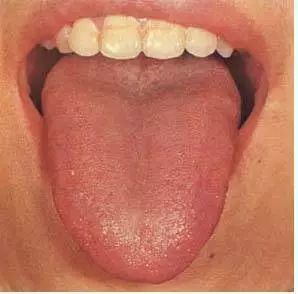
The characteristics of a normal tongue are: a pale red color, moist quality, moderate size, and flexibility; the tongue coating is even, thin, white, and moist, referred to as “pale red tongue, thin white coating.” This indicates a normal tongue body, or it may represent the early stage of an external pathogen or a mild internal injury.
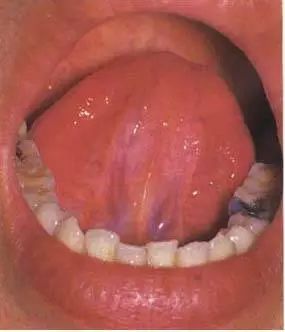
Normal sublingual veins are only faintly visible, appearing as purple-red lines, and should not be swollen. Most are single branches, with the largest diameter not exceeding 2.7mm, and the length generally does not exceed three-fifths of the distance from the tip of the tongue to the sublingual tubercle.
Color of the Tongue (Observing Tongue Color/Shape)
Tongue color: pale red, pale white, red, deep red, blue-purple.

1. Pale white tongue
The tongue is pale white, more white than red, with a thin white and moist coating, indicating deficiency of both qi and blood.Pale white tongues are often seen in conditions of yang deficiency and excess cold, as well as qi deficiency and blood deficiency.
2. Red tongue
The entire tongue body is red, or the edges and tip are red. The coating is thin yellow, and the tongue quality is rough, indicating heat syndrome.Red tongues are seen in conditions of external heat or yin deficiency with excess fire, with yellow and dry coating indicating internal excess heat; a red tongue body with little or no coating indicates internal heat due to yin deficiency.Red tips are often seen in conditions of heart fire flaring up, indicating heat in the upper jiao.
3. Deep red tongue
The tongue is deep red, referred to as “deep red tongue,” indicating excess heat. It suggests excess heat, stagnation of qi and blood, and damage to the righteous qi.This is a manifestation of heat evil penetrating the nutritive blood, usually indicating depletion of body fluids, with deeper colors indicating more severe heat evil and more serious conditions.
4. Blue-purple tongue
The tongue is blue-purple, with a white greasy coating, caused by stagnation of qi and blood. It suggests phlegm and fluid retention, lung and kidney qi deficiency, and blood stasis. Blue-purple tongues are seen in chronic bronchitis with secondary infections, emphysema, and heart failure, with dark purple color and greasy white coating.
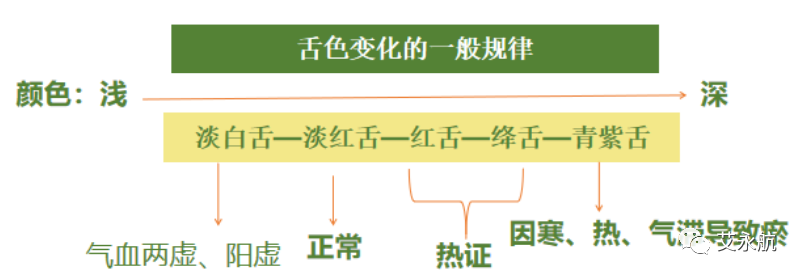
Tongue shape
Tongue shape: old tongue, tender tongue, fat tongue, thin tongue, dotted tongue, prickled tongue, cracked tongue, tooth-marked tongue.
1. Fat and thin tongue
Fat tongue—large and thick, filling the mouth; thin tongue—small and thin.
Fat tongue—indicates water dampness, phlegm retention, and swelling due to phlegm-heat toxin; thin tongue—indicates deficiency of both qi and blood, or excess fire due to yin deficiency.
2. Dotted and prickled tongue
Dotted and prickled tongues are often seen at the tip of the tongue. Dotted tongue—red or purple-red spots protruding on the tongue surface; prickled tongue—papillae protruding like thorns.
Indicates extreme heat in the internal organs, with heat in the blood. The tip of the tongue—indicates excessive heart fire; the middle of the tongue—indicates excessive heat in the stomach and intestines; the sides of the tongue—indicates excessive heat in the liver and gallbladder; dotted and prickled tongue indicates heat entering the nutritive blood.
3. Cracked tongue
The tongue surface shows various shapes of cracks, with no coating covering the cracks.
Indicates deficiency of yin and blood. A red or deep red tongue with cracks indicates excessive heat damaging yin fluids; a pale white tongue with cracks indicates blood deficiency; congenital cracks are not pathological.
4. Tooth-marked tongue
The edges of the tongue show marks from teeth. Indicates spleen deficiency, excess dampness, and qi deficiency. This occurs when the spleen qi is deficient, leading to poor transformation of water and dampness, resulting in excess moisture in the body, causing the tongue to swell and create tooth marks.

Tongue Coating Section (Observing Coating Color/Quality)
Formation of tongue coating:
Thin coating ─ stomach qi rises + stomach fluids rise → condensing on the tongue surface.This indicates a normal tongue coating or the early stage of a disease, or shows a mild condition.
Thick coating ─ stomach qi rises + accompanied by food stagnation, phlegm dampness, and other pathogenic factors → accumulates on the tongue surface, indicating a transition from mild to severe condition, or the presence of gastrointestinal stagnation.
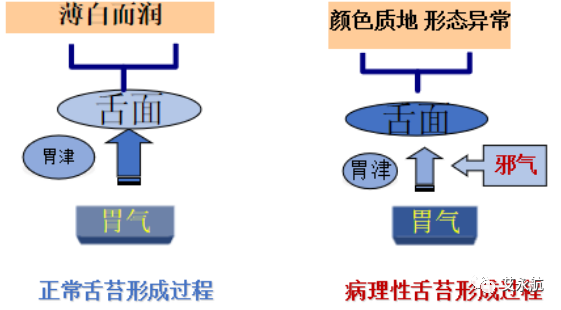
Coating Color
1. Thin white moist coating
The white coating attached to the tongue surface can vary in thickness, moisture, and smoothness.
Often indicates exterior syndrome, cold syndrome, or damp syndrome. It can also be seen in heat syndrome.
Thin white and moist coating: normal individuals, exterior syndrome, mild conditions.
2. Thin white slippery coating
The tongue coating has excessive moisture, feeling slippery and wet to the touch, and may even drip saliva when the tongue is extended, referred to as “slippery coating,” often indicating water dampness or phlegm retention. Indicates yang deficiency with stagnant water dampness.
3. White greasy coating
White thick greasy coating: indicates phlegm dampness, turbid dampness, or food stagnation.
White thick dry coating: indicates phlegm turbid heat.
The characteristics of greasy coating are: the coating is fine and dense, tightly adhering to the tongue surface, and does not come off easily when scraped, often due to dampness, phlegm, or food stagnation.
4. White slippery greasy coating
The tongue coating is white and greasy, with excessive moisture on the tongue, pale purple tongue color, and purple spots on the tip. Indicates insufficient yang qi and accumulation of phlegm.
5. Yellow coating
The yellow coating attached to the tongue surface.Indicates spleen and stomach disease, internal syndrome, or heat syndrome.

Coating Quality
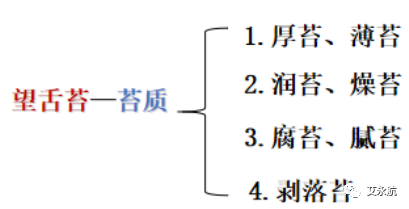
1. Thick and thin coating
Thin coating—can faintly see the tongue quality through the coating, referred to as “see-through coating”; thick coating—cannot see the tongue quality through the coating, referred to as “non-see-through coating.”Indicates the severity of the pathogenic factors and the depth of the evil qi.
2. Slippery and dry coating
Excessive moisture on the tongue surface, with saliva dripping when extended—slippery coating; dry coating, feeling dry to the touch—dry coating;
Indicates the balance of body fluids. Slippery coating—indicates cold syndrome and phlegm dampness. Dry coating—indicates damage to body fluids, or phlegm, blood stasis, and yang qi being obstructed, preventing fluids from rising.
3. Desquamated coating
The coating is completely or partially desquamated, with complete desquamation referred to as “mirror tongue”; irregular desquamation is referred to as “geographic tongue.”
The tongue coating is uneven due to the irregular rise of stomach qi. This may occur when the stomach qi is damaged, for example, when a child has taken antibiotics or anti-inflammatory drugs, damaging the stomach qi, leading to the formation of geographic tongue.Indicates insufficient stomach qi, depletion of stomach yin, or deficiency of both qi and blood;

4. Putrid and greasy coating
Greasy coating—fine and dense, merging into patches, resembling oil; putrid coating—coarse and loose, resembling tofu residue.
Thin greasy coating—food stagnation, or spleen deficiency with dampness; white greasy slippery coating—phlegm turbid, cold dampness; yellow greasy coating—phlegm heat, damp heat, summer heat; putrid coating—food stagnation in the stomach and intestines, phlegm turbid retained; putrid coating that cannot regenerate—indicates failure of stomach qi.
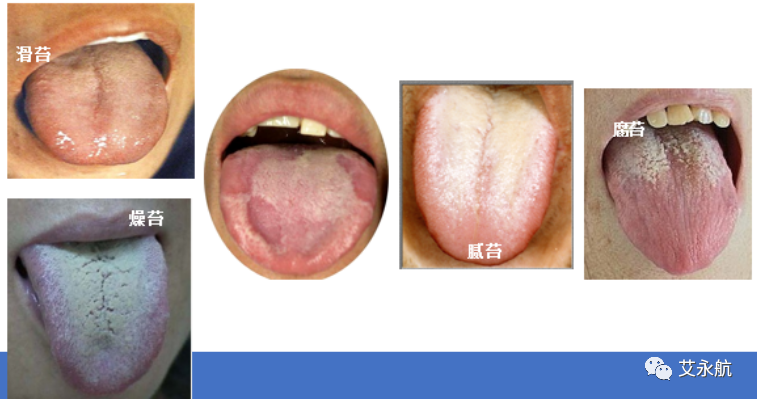
Sublingual Veins Section
Normal sublingual veins: length does not exceed three-fifths of the distance from the sublingual tubercle to the tip of the tongue; color is pale purple.
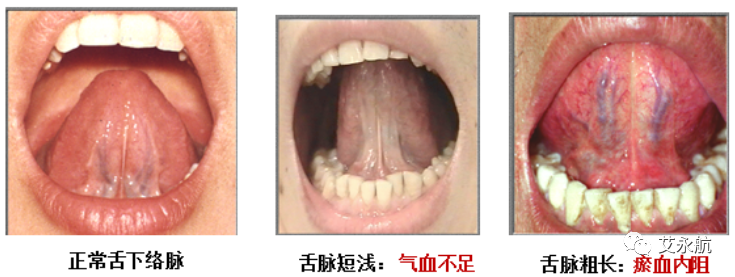
If there are many blue-purple or purple-black small vesicles under the tongue, it often indicates liver qi stagnation and blood stasis; if the sublingual veins are blue-purple and swollen, it has similar significance to a blue-purple tongue, indicating phlegm-heat obstruction or cold coagulation and blood stasis. In summary, blue-purple and engorged sublingual veins are caused by qi stagnation and blood stasis.
Today’s Tips
Nine Types of Tongue Manifestations
